Acute
The new Dartford Union workhouse opened in 1860 on a 4.25 hectare site known as Lurchin's Hole to the west of the town centre, replacing the previous parish workhouse built in 1729 on the same site. It eventually became one of the largest workhouses in Kent.
In 1878 the workhouse was enlarged and a chapel which could seat 200 was added. Two infirmaries were built between 1887 and 1897; these were also used by the townspeople. The Fever Hospital at the northwest of the workhouse, which had been built in 1840, closed in 1893 when the Bow Arrow Isolation Hospital opened.In 1913 the infirmaries became known as King Edward Hospital, with their entrance in King Edward Avenue. During WW1, following the 'ammunition scandal' in 1915 about the shortage of artillery shells, Vickers-Armstrong, the local munitions company, took over the workhouse and Hospital for their workers (the increase in production required a greater workforce). The workhouse closed and became a hostel, and the Hospital closed to the public and became a munition workers' hospital. In 1919 the site reverted once again to the Board of Guardians.
In 1930 Kent County Council took over administrative control of the Hospital, which by this time had taken over the workhouse site. A Nurses' Home was built in 1934 and the old Nurses' Home became the doctors' residence. After a debate about the name - whether to call it Dartford Hospital or the North (West) Kent Hospital - the King Edward Hospital was renamed the County Hospital, Dartford, in 1935. In the same year, health, light and orthopaedic clinics were established.
In 1937 the Louise I ward block was built (the second one, Louise II was only built after WW2, in 1949). The Hospital then had 638 beds, 6 for maternity cases and 20 for TB patients.
During WW2 the town of Dartford and its surrounding countryside were vulnerable to air-raid attacks as enemy bombers, unable to reach central London, dropped their bombs in the area before returning home. The local armament factories were also targetted. A First Aid station was set up in the Hospital.
In 1940, during WW2, a high explosive bomb demolished one of the two women's ward blocks, killing 2 nurses and 22 patients. One of the ward sisters, Mary Gantry, regardless of her own safety, crawled through the wrecked building and administered injections of morphine to the trapped, injured women. The survivors were taken to Joyce Green Hospital. (In 1991 a refurbished ward at Joyce Green Hospital was named in honour of her bravery. The ward block, named A2 Marion, at West Hill Hospital was never rebuilt.)
After WW2 the Hospital continued to expand. It joined the NHS in 1948 as the West Hill Hospital. It shared many of its medical staff with the Livingstone Hospital. A new maternity unit - Louise II block - was opened in 1949. It had one 6-bed ward, two 4-bed wards, six 1-bed rooms, a pre-labour room and two labour rooms. The nursery room had 15 cots. The air-raid shelter was adapted into a sterilising room, milk preparation room, bathroom, sister's offices and a nurses' Lecture Room - all at the cost of £30,000.
In 1950 it had 423 beds and, by 1954, 347 beds. The original casual wards built in 1898, named Christopher and Constance, became the psychiatric unit. In 1964 they were demolished, along with the old Robin (nursery) and Renton (maternity) wards for the new Out-Patients Department and Accident Unit. In 1968 the last old-age pensioners left the Phillips and Hesketh wards for elderly infirm males (these wards were located in the old workhouse; the wards for the elderly infirm females were Grace Say and Eva, located in the former school).
In 1971 the new Accident & Emergency Department, operating theatres and Out-Patients Department were opened by Princess Anne.
The chapel closed during the 1980s and was used for storing X-rays. (It was reconsecrated in 1994. Its west end windows had been damaged by bomb blast during WW2 but were still only partially restored by 1996). The former workhouse buildings on Lurchin's Hole (at the corner of West Hill and Priory Road) were sold and later converted to offices, with their entrance in Priory Road, on the site of the old boiler house.
By 1985 there were 177 beds. The Dartford and Gravesham Health Authority decided to end maternity services at the Hospital in 1988, as the facilities were "old, cramped and inadequate". In 1990 the Hospital had 161 beds.
In 1997 the Accident & Emergency Department and ancillary services were transferred to Joyce Green Hospital. With the wards closed, the Hospital operated an Out-Patients service only. This ceased in 2000 when the new purpose-built Darent Valley Hospital opened.
Present status (September 2008)
The Hospital buildings were demolished in 2001. The chapel, built in 1878, survives.
The Dartford Society managed to prevent a few of the former workhouse buildings being demolished. These were refurbished in the late 1980s as part of Twisleton Court and are now used as small business units. (John Twisleton was a member of the leading gentry family and a local mill owner. He built the Spital Almhouses at 21-29 West Hill in the 18th century.)
The Hospital site is being redeveloped by Barratt Homes as West Hill Park, a housing development of about 230 dwellings set within 10 acres of the Hospital grounds. The west side has been mainly rebuilt and building work is in progress on the southwestern and northern parts.
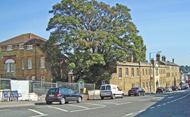
Looking along West Hill. The workhouse buildings are on the right.
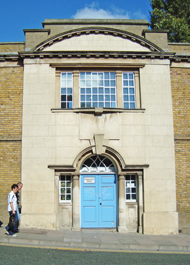
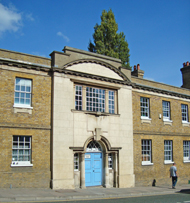
Endeavour House, part of the Twisleton Court redevelopment.
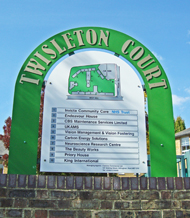
Twisleton Court is on the southeast of the site.
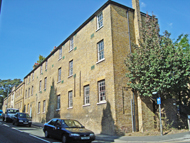

The Twisleton Court buildings from West Hill.
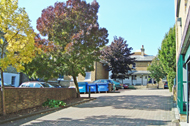
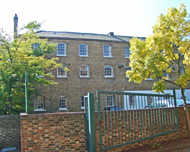
Looking within Twisleton Court from Priory Hill.
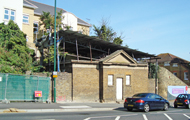
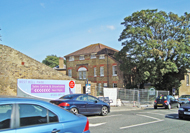
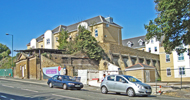

Parts of the old wall remain along West Hill.
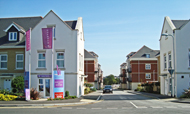
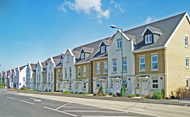
Bingham P (revised by Burne J 1996) A History of West Hill Hospital. Unpublished manuscript, Wellcome Library.
http://dartfordhospitalhistories.org.uk
http://hansard.millbanksystems.com
http://joycegreenhospitalrevisited.blogspot.com
www.dartford.gov.uk
www.dartfordarchive.org.uk
www.kent.gov.uk
www.kentonline.co.uk
www.workhouses.org.uk
Return to home page